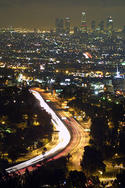Perhaps no president in recent history has more pressure on him to perform economic miracles than Donald Trump. As someone who ran on the promise that he could fix the economy -- and largely won because of it -- Trump faces two severe challenges, one that is largely perceptual and another more critical one that is very real.
To start, Trump must cope with the widespread idea, accepted by much of the media, that we are experiencing something of an “Obama boom.” read more »





















